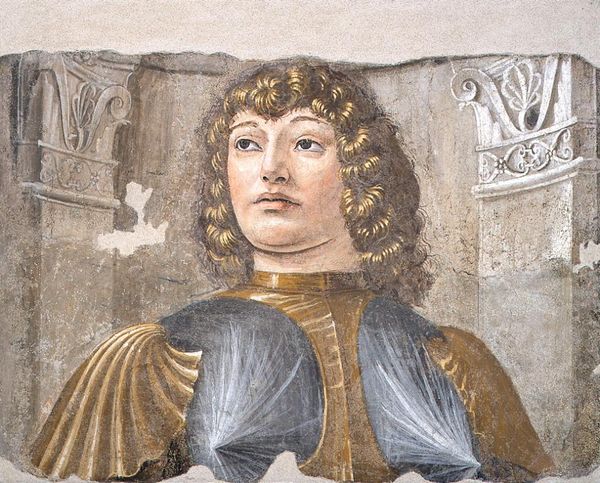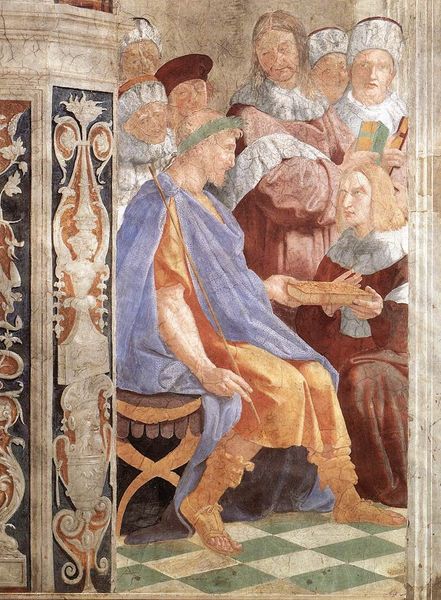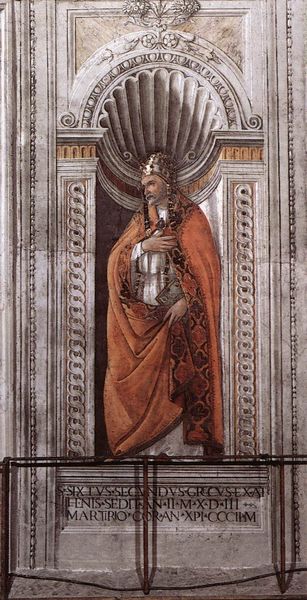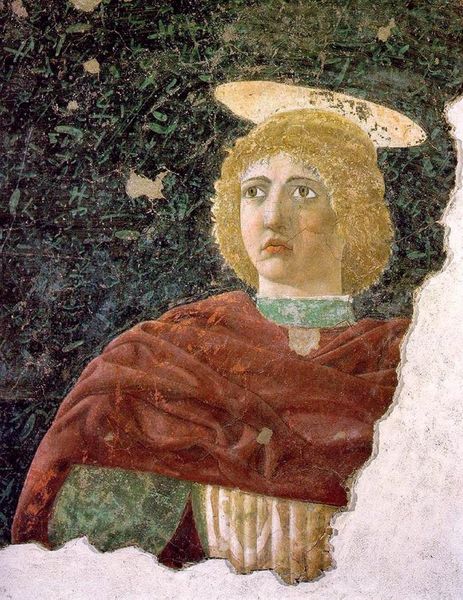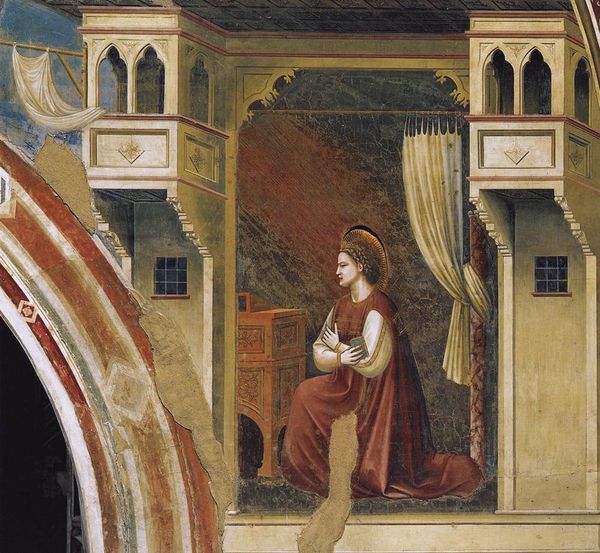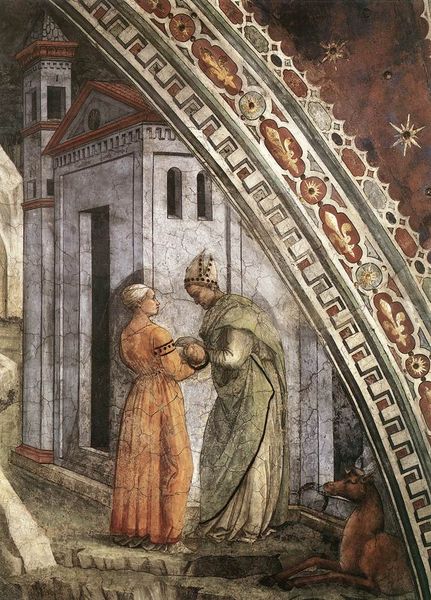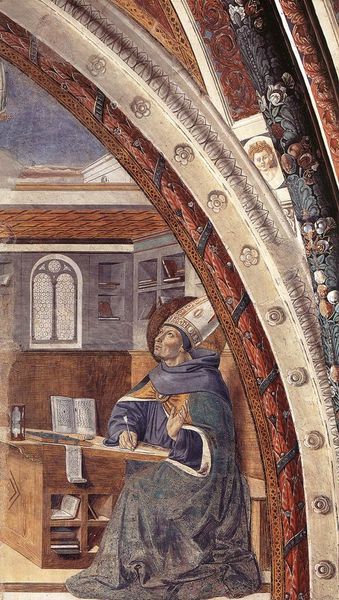
fresco
#
portrait
#
sculpture
#
fresco
#
classicism
#
academic-art
#
italian-renaissance
Copyright: Public domain
Donato Bramante painted “The Chanter”, likely as a fresco, in Italy during the late 15th or early 16th century. The figure of the chanter, or singer, provides a glimpse into the cultural and institutional world of Renaissance music. The work reflects the social importance of music within the church and the courts. During this time, musical performance was not just entertainment; it was seen as a form of devotion and an expression of social status. The chanter's elaborate clothing and laurel wreath, symbols of accomplishment and prestige, underline the singer’s valued position in society. Bramante's idealized portrayal suggests an effort to elevate the status of musicians, aligning them with humanist ideals that celebrated human achievement. To understand this painting fully, scholars turn to archival records of musical institutions, court documents, and contemporary treatises on music. The image encourages us to investigate how artistic practices reflect and shape the social values of their time.
Comments
No comments
Be the first to comment and join the conversation on the ultimate creative platform.

